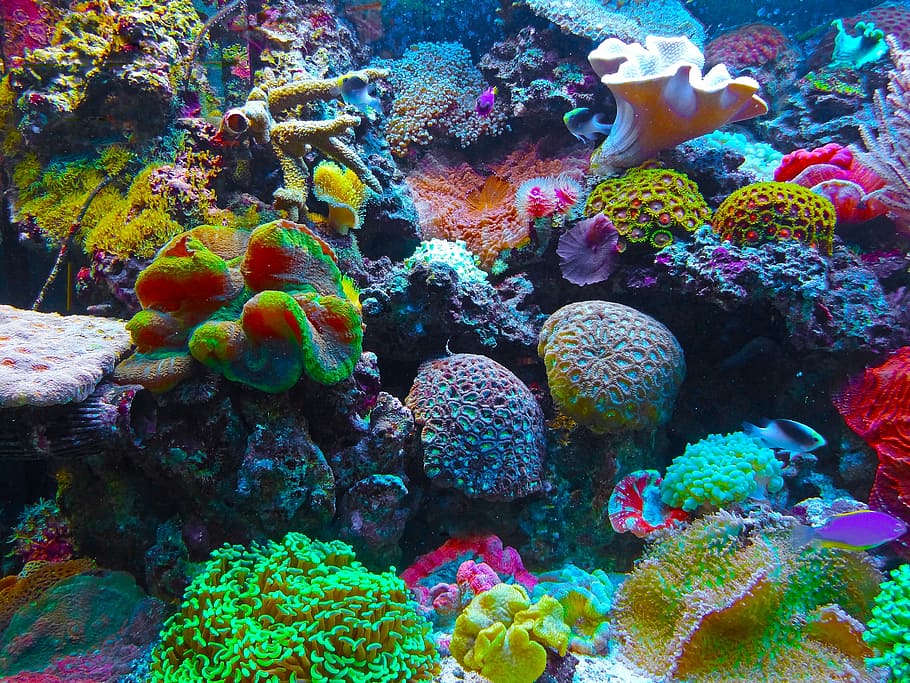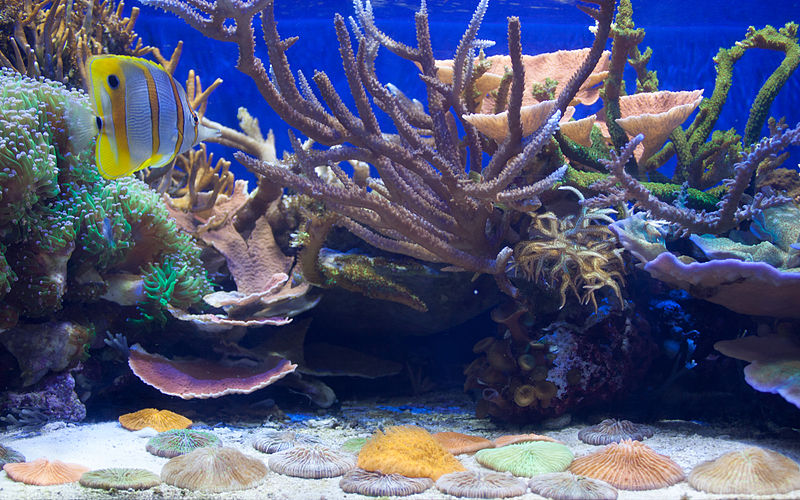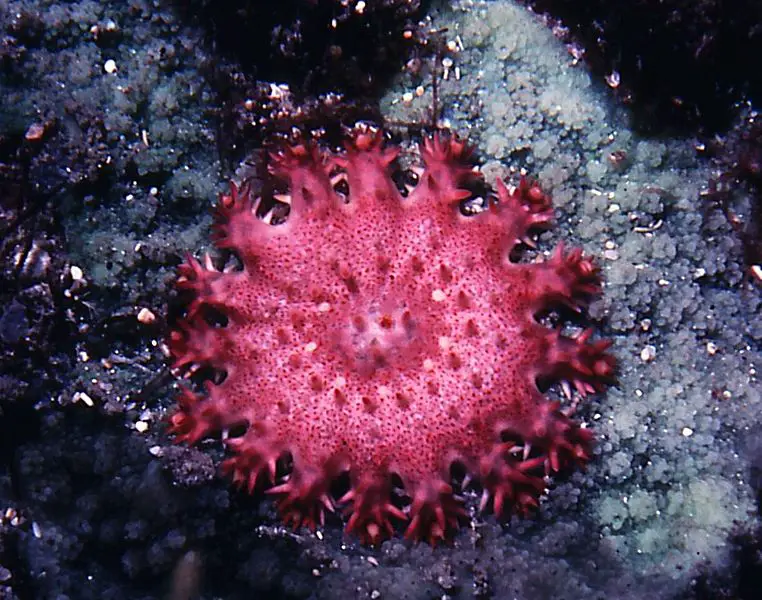What are some common coral species suitable for beginners? Expert Guide
Setting up a reef tank can be a rewarding experience for both beginners and experienced aquarists. However, choosing the right coral species is crucial for ensuring a successful and thriving marine environment. For those new to the hobby, selecting hardy and easy-to-care-for corals can make the process less daunting and more enjoyable.
There are several common coral species well-suited for beginners, as they require minimal maintenance and adapt well to various tank conditions. These include Star Polyps, Zoanthids, Mushroom Corals, and Green Star Polyps, among others. These corals exhibit vibrant colors and exciting shapes and serve as a solid foundation for aspiring hobbyists looking to expand their reef tanks in the future.
When embarking on this exciting journey, it is essential for beginners to research and understand the specific needs and requirements of the chosen coral species. By doing so, they can ensure a healthy and thriving reef tank environment and enjoy the beauty and diversity that marine life has to offer.
Selecting Beginner-Friendly Coral Species
When starting in the reef tank hobby, it’s essential to choose coral species that are both hardy and easy to care for. This ensures a higher success rate and helps beginners develop their coral-keeping skills. Let’s look at some beginner-friendly coral species in two main categories: Soft Corals and LPS Corals.
Soft Corals
Soft corals are generally more tolerant of varying water conditions and can be a great starting point for beginners. Here are some of the recommended soft corals for newcomers:
- Mushroom Corals: Mushroom corals are one of the easiest coral species to care for, making them perfect for beginners. They are available in a wide range of colors, shapes, and sizes, making them an ideal addition to any reef aquarium. Mushroom corals are soft corals that do not have a hard skeleton, which means they are not as delicate as other coral species. They do not require intense lighting or water flow and can thrive in various water conditions.
- Zoanthids: Zoanthids are another great option for beginners as they are easy to care for and come in a range of colors and patterns. They are small, soft corals that grow in colonies and can quickly spread over rocks and other surfaces in the aquarium. They are relatively tolerant of a range of water conditions, but it is essential to maintain stable water parameters to ensure their long-term health.
- Xenia: Xenia corals, also known as pulsing corals, are another excellent option for beginners. They are soft corals with a unique pulsing motion, adding a mesmerizing effect to the aquarium. They are relatively hardy and can tolerate a range of water conditions. However, they require moderate to high water flow to thrive.
- Green Star Polyps (GSP): Green Star Polyps are a popular beginner coral species due to their ease of care, fast growth, and vibrant green color. They are soft corals that form mats and can quickly spread over rocks and other surfaces in the aquarium. They do not require intense lighting or water flow and can tolerate a range of water conditions. However, they can become invasive if not kept in check.
- Toadstools: Toadstool Coral is a stunning coral species that resembles the cap of a toadstool mushroom, adding a unique appeal to reef tanks. This soft coral is relatively easy to care for and is an excellent choice for beginners, requiring only moderate lighting and water flow. Toadstool Coral is a fast-growing species that can expand up to several inches, requiring adequate growing space. It has fleshy, elongated polyps that come in various colors, including green, brown, and purple. Toadstool Coral is a peaceful coral that can coexist with other coral species and marine life in the aquarium. Regular feeding with phytoplankton and small pieces of meaty seafood is recommended to maintain its health and vibrancy.
LPS Corals
While slightly more demanding than soft corals, LPS (Large Polyp Stony) corals can still be suitable for beginners given the proper care. The following LPS corals are known to be beginner-friendly:
- Bubble Coral: Bubble Coral is a captivating coral species that is sure to draw attention in any reef tank. With its large, bubble-shaped polyps, it adds a unique charm to any aquatic environment. This type of coral is relatively easy to care for, making it an ideal choice for beginners. Bubble Coral requires moderate lighting and a moderate water flow to thrive. It is vital to provide adequate space as it grows, as it can extend its bubble-like polyps up to several inches in length. To keep Bubble Coral healthy, it is recommended to supplement its diet with plankton and small pieces of meaty seafood.
- Duncan Coral: Duncan Coral is a popular and hardy LPS coral known for its long tentacles and colorful polyps. This coral is ideal for intermediate-level aquarists and can be found in various colors ranging from green to pink. Duncan Coral requires moderate lighting and moderate water flow to flourish. It is a relatively fast-growing coral that can reproduce asexually, making it an excellent choice for those looking to propagate corals in their reef tank. To maintain its vibrant colors, it is recommended to feed Duncan Coral regularly with phytoplankton, zooplankton, and other small pieces of meaty seafood.
- Candy Cane Coral: Candy Cane Coral, also known as Trumpet Coral, is one of the more “bulletproof” corals and is an excellent choice for beginners. This coral is easy to care for and can thrive in a range of lighting conditions. Candy Cane Coral requires moderate water flow to maintain its shape and size. It has fleshy, cylindrical polyps that come in various colors, including green, brown, and blue. To keep Candy Cane Coral healthy, it is recommended to feed it regularly with phytoplankton, zooplankton, and other small pieces of meaty seafood.
- Hammer Coral: Hammer Coral is an attractive coral species known for its stunning, hammer-shaped polyps. It is relatively easy to care for and can adapt to various lighting conditions. Hammer Coral requires moderate water flow and moderate to high lighting to thrive. It has fleshy, branching polyps that come in multiple colors, including green, purple, and brown. To maintain its health and vibrancy, it is recommended to feed Hammer Coral regularly with phytoplankton, zooplankton, and other small pieces of meaty seafood.
- Montipora: Montipora is a diverse coral species that comes in various colors and forms, adding beauty and diversity to any reef tank. Montipora requires moderate to high lighting and average water flow to flourish. This coral can adapt to various water conditions, making it a popular choice for beginner and experienced aquarists. It has a relatively fast growth rate and can be propagated easily, making it an excellent choice for those looking to expand their reef tank collection.
- Frogspawn Coral: Frogspawn Coral is a unique coral species popular among beginner LPS enthusiasts. With its unique tentacles resembling a cluster of frog eggs, it is a fascinating addition to any reef tank. Frogspawn Coral requires moderate lighting and moderate water flow to thrive. It has fleshy, branching polyps that come in various colors, including green, pink, and blue. To keep Frogspawn Coral healthy, it is recommended to feed it regularly with phytoplankton, zooplankton, and other small pieces of meaty seafood.
- Torch Coral: Torch Coral is a stunning coral species known for its long, tentacle-like polyps and vibrant colors. This coral requires moderate to high lighting and average water flow to thrive. It has fleshy, branching polyps in various colors, including green, purple, and blue. Torch Coral is relatively easy to care for and ideal for intermediate-level aquarists.

Overall, incorporating these beginner-friendly coral species into a reef tank can lead to a successful and rewarding experience. By starting with these hardy and low-maintenance options, beginners can build confidence and continue to explore the fascinating world of coral-keeping.
Creating a Suitable Environment
When setting up a reef tank for beginners, it’s important to create a suitable environment for corals to thrive. This includes maintaining proper water parameters, appropriate lighting, and adequate water flow.
Water Parameters
Water chemistry plays a crucial role in the health of corals. Key parameters to monitor and maintain include:
- Temperature: Aim for a consistent temperature between 75°F and 80°F.
- Salinity: Maintain a specific gravity between 1.023 and 1.025.
- PH: Aim for a pH level between 8.1 and 8.4.
- Alkalinity: Keep the alkalinity between 8 and 12 dKH.
- Calcium: Maintain a calcium concentration of 350-450 ppm.
- Magnesium: Keep magnesium levels between 1250 and 1350 ppm.
- Nitrate: Aim for nitrate levels below 10 ppm, with ideal levels between 0.2 and 5 ppm.
- Phosphate: Keep phosphate levels below 0.03 ppm.
It’s essential to regularly test and adjust these parameters as needed. Weekly water changes, use of chemical filtration media, and dosing of trace elements can help maintain optimal water chemistry.
Lighting
Corals depend on light for energy, as they host photosynthetic symbiotic algae called zooxanthellae. For beginner coral species, moderate light intensity is usually sufficient. Choose an appropriate LED lighting system for reef aquariums and adjust the intensity and duration to suit the specific corals in your tank.
Many beginner corals, such as mushrooms (Actinodiscus spp.) and waving hand corals (Anthelia spp. & Xenia spp.), thrive in moderate light. Therefore, experts recommend a light duration of 8 to 12 hours daily to provide adequate energy without causing excessive algae growth.
Water Flow
Proper water movement is essential for corals, as it helps deliver nutrients, removes waste, and ensures an adequate oxygen supply. Different corals have varying preferences for water flow. However, beginner coral species often do well in moderate water movement.
Ensure your reef tank has a suitable water circulation system, such as adjustable powerheads or wavemakers, to create a mix of turbulence and laminar flow, mimicking natural reef environments.
Some popular beginner corals and their water flow preferences include:
- Green star polyps (Pachyclavularia spp.): Moderate to high flow.
- Toadstool mushroom coral (Sarcophyton spp.): Low to moderate flow.
- Finger leather corals (Sinularia spp.): Moderate flow.
Caring for Your Corals
Many beginner coral species are suitable for a novice coral keeper; proper care ensures these corals thrive in your reef tank. This section will cover essential aspects of coral care, including feeding and growth, fragging corals, and safety measures related to palytoxin.
Feeding and Growth
Several common coral species, such as the Euphyllia, soft corals like Palythoas, and the Pulsing Xenia, require specific care for feeding and growth. In addition, each coral species has unique requirements in terms of lighting, water flow, and nutrients.
Most corals benefit from regular, targeted feedings. To help maintain healthy growth, ensure that the water parameters in your reef tank are consistent, with a stable pH and optimal mineral content. Monitor the tank’s calcium, carbonate hardness, and phosphate levels regularly with test kits like the API Reef Aquarium Master Test Kit.
It’s essential to provide adequate lighting to support coral growth. Favia species, for example, prefer bright lights. Remember that some corals are sessile and may need to be anchored to a proper substrate to establish themselves in the tank.
Fragging Corals
Fragging is a technique used to create new coral colonies from existing corals, which can benefit both coral growth and the overall health of your reef tank. However, fragging should only be attempted once you fully understand the process and have researched the specific needs of the coral species you intend to frag.
When fragging, always use clean, sterilized tools and carefully prepare the area where you will perform the procedure. The goal is to minimize stress on the coral and promote healthy growth in both the parent colony and the new frag.
Safety and Palytoxin
While corals can be a beautiful addition to your reef tank, it’s essential to understand the potential dangers associated with some species. For example, certain soft corals like Palythoas can produce palytoxin, a highly potent and dangerous toxin. Handling these corals without taking proper precautions can pose a significant risk to you and your aquarium’s inhabitants.
Always wear gloves and eye protection when handling corals known to produce palytoxin, and be mindful of any open wounds on your hands that may come into contact with the coral. Additionally, properly quarantine any new corals before introducing them to your tank to prevent the introduction of harmful pathogens or parasites.
Introducing Fish and Invertebrates
Establishing a successful saltwater aquarium involves a careful selection of its inhabitants, including coral, fish, and invertebrates. For beginner aquarists, choosing hardy coral species, adaptable to various water parameters and easy to care for is essential for a thriving tank.
Some common coral species suitable for beginners include Duncan corals and caulastrea. Duncan corals (Duncanopsammia axifuga) are large polyp stony (LPS) corals that can adapt well to a range of lighting, flow, and water parameters. They are generally easy to maintain and can help novice aquarists experience success while learning about the unique care requirements for corals. Similarly, caulastrea, also known as candy cane or trumpet corals, is a highly resilient LPS coral species that offer flexibility in the placement, as they can be placed in low to moderate lighting and water flow.
When introducing fish to a saltwater aquarium with coral, it is vital to consider the compatibility between the species. Selecting fish that are generally reef-safe and compatible with the chosen coral species will ensure a harmonious environment that promotes coral growth and stability. In addition, avoiding aggressive or territorial fish that can harm corals or other tank inhabitants is crucial.
In addition to coral and fish, invertebrates play a crucial role in maintaining a healthy reef environment. Some beginner-friendly invertebrates include cleaner shrimp and snails, which help maintain stability by assisting with algae control and detritus removal. Providing a balanced ecosystem with a variety of inhabitants contributes to the overall health and success of a saltwater aquarium.

Conclusion
Choosing the suitable coral species for your aquarium can be daunting, especially for beginners. However, by selecting one of the species mentioned in this guide, you can be sure that you are choosing a coral that is easy to care for and suitable for your skill level.
Mushroom corals, zoanthids, green star polyps, Xenia corals, leather corals, and candy cane corals are all excellent choices for beginners. Each coral species has unique characteristics that make them an exciting addition to any reef aquarium. With proper care, these corals can thrive and add vibrant color and life to your underwater world.
When choosing a coral species, it’s essential to research and understand their care requirements thoroughly. Different corals have different lighting, water flow, and water quality needs. Therefore, it’s crucial to choose a coral species that can thrive in the conditions of your aquarium.
Maintaining a coral aquarium is an exciting and rewarding hobby. By choosing the right coral species, you can create a thriving ecosystem in your home and bring a piece of the underwater world into your life. We hope this guide has provided you with the knowledge and confidence to choose the best coral species for your needs.
Remember to always provide your coral with proper care and attention, and they will reward you with their stunning beauty and vitality. Happy reef-keeping!



